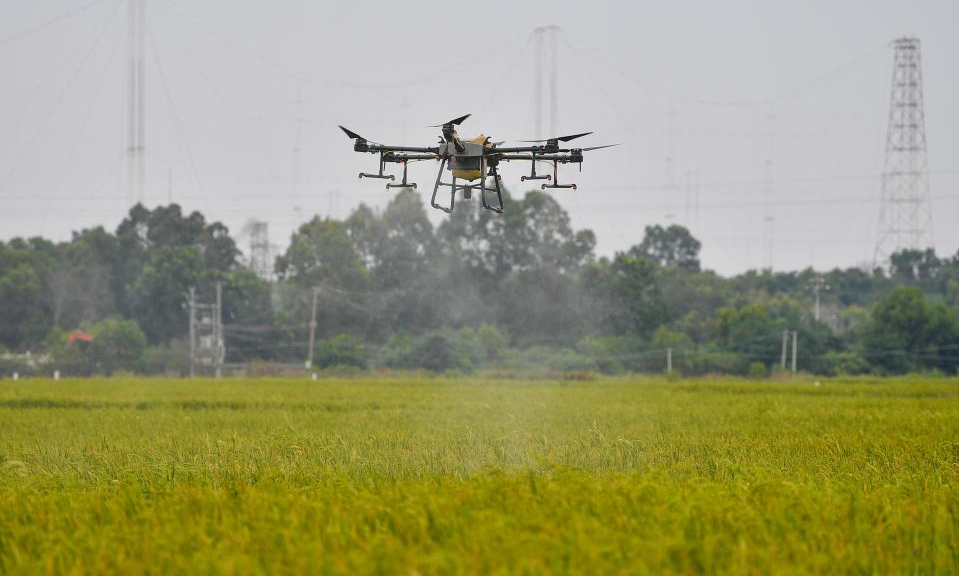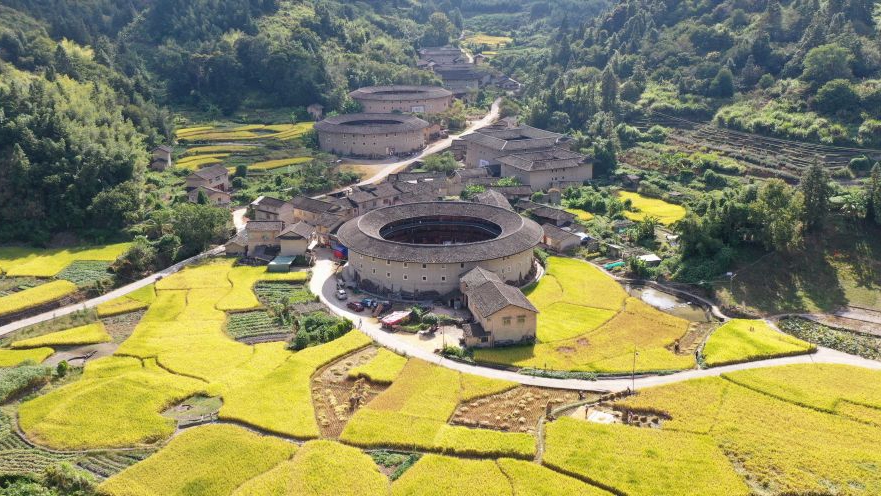Fishers harvest laver in Xiapu, SE China's Fujian

Fishers harvest laver at Shatangjie Village, Songshan Sub-district, Xiapu County of southeast China's Fujian Province, on Oct. 21, 2022. Known as zicai in Chinese, gim in Korean, and nori in Japanese, laver is an edible seaweed that plays an important part in the diets of East Asian countries. As one of the amplest source of laver products in the country, Xiapu boasts a vast area of seaborne farms for such seaweed, whose breeding, growing, and processing has become a leading cash cow for the locals. (Xinhua/Jiang Kehong)
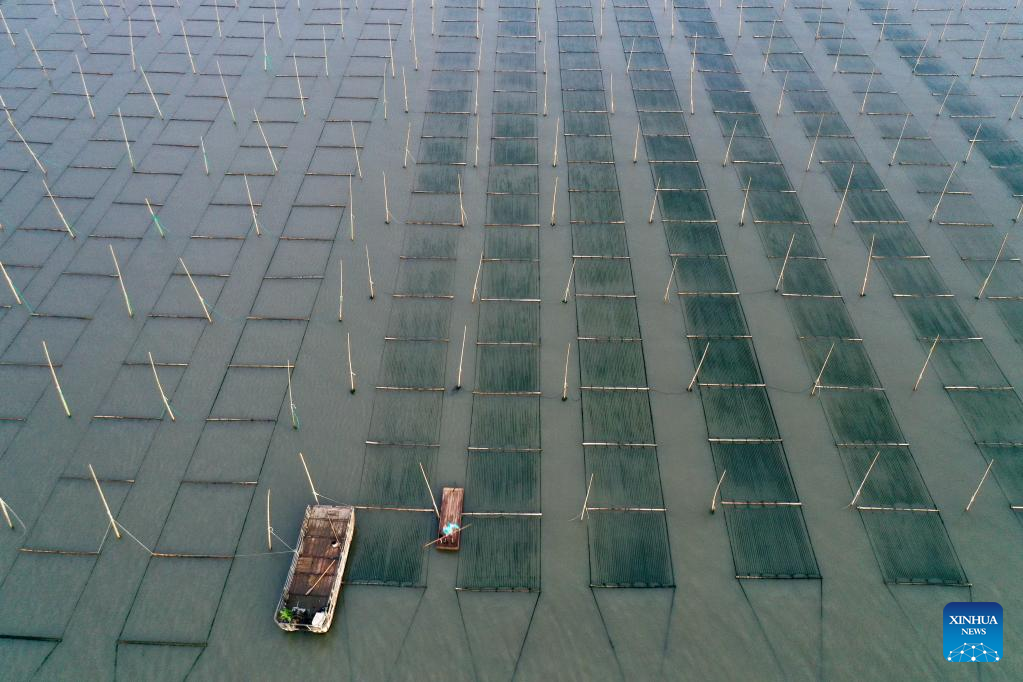
This aerial photo taken on Oct. 20, 2022 shows a fisher taking care of a seaborne laver farm at Sansha Town, Xiapu County of southeast China's Fujian Province. Known as zicai in Chinese, gim in Korean, and nori in Japanese, laver is an edible seaweed that plays an important part in the diets of East Asian countries. As one of the amplest source of laver products in the country, Xiapu boasts a vast area of seaborne farms for such seaweed, whose breeding, growing, and processing has become a leading cash cow for the locals. (Xinhua/Jiang Kehong)
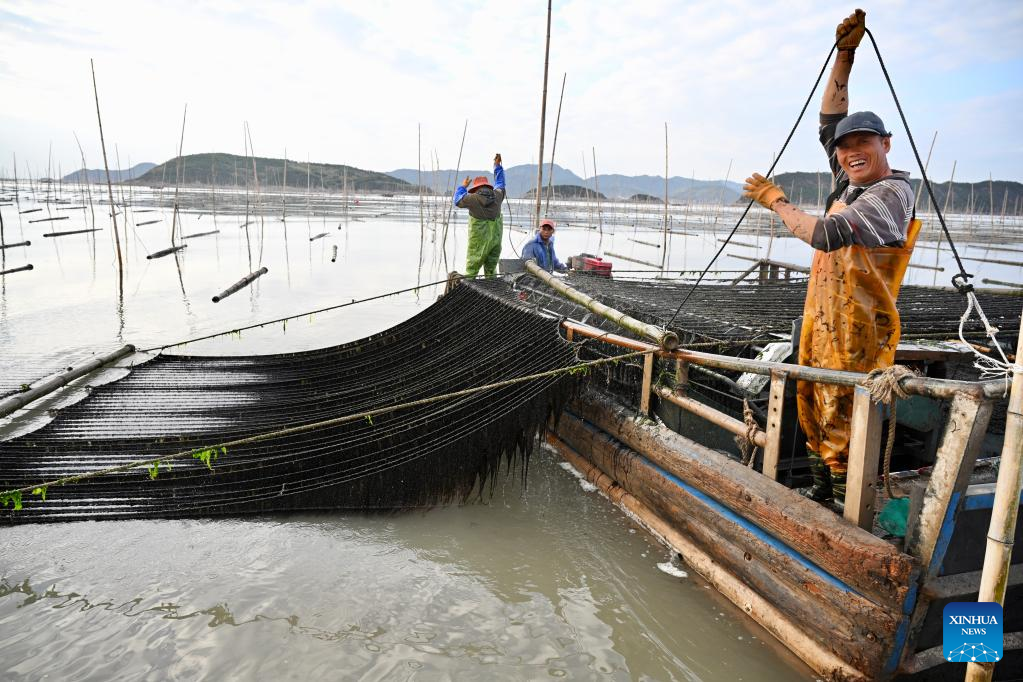
Fishers harvest laver at Shatangjie Village, Songshan Sub-district, Xiapu County of southeast China's Fujian Province, on Oct. 21, 2022. Known as zicai in Chinese, gim in Korean, and nori in Japanese, laver is an edible seaweed that plays an important part in the diets of East Asian countries. As one of the amplest source of laver products in the country, Xiapu boasts a vast area of seaborne farms for such seaweed, whose breeding, growing, and processing has become a leading cash cow for the locals. (Xinhua/Jiang Kehong)
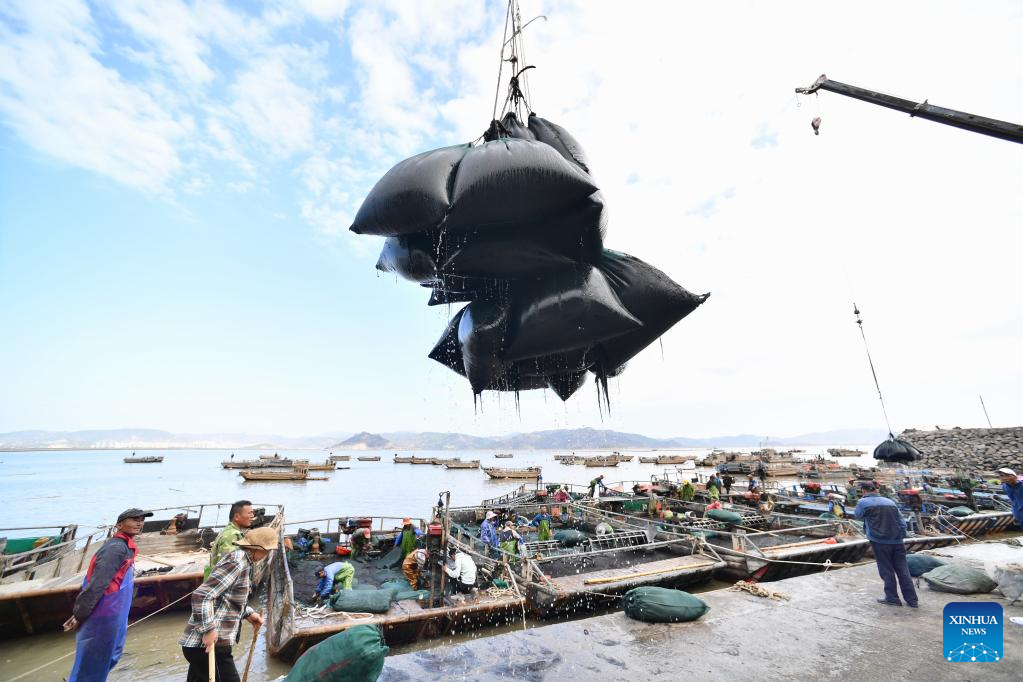
Staff members lift newly harvested laver at a port of Shatangjie Village, Songshan Sub-district, Xiapu County of southeast China's Fujian Province, Oct. 21, 2022. Known as zicai in Chinese, gim in Korean, and nori in Japanese, laver is an edible seaweed that plays an important part in the diets of East Asian countries. As one of the amplest source of laver products in the country, Xiapu boasts a vast area of seaborne farms for such seaweed, whose breeding, growing, and processing has become a leading cash cow for the locals. (Xinhua/Jiang Kehong)
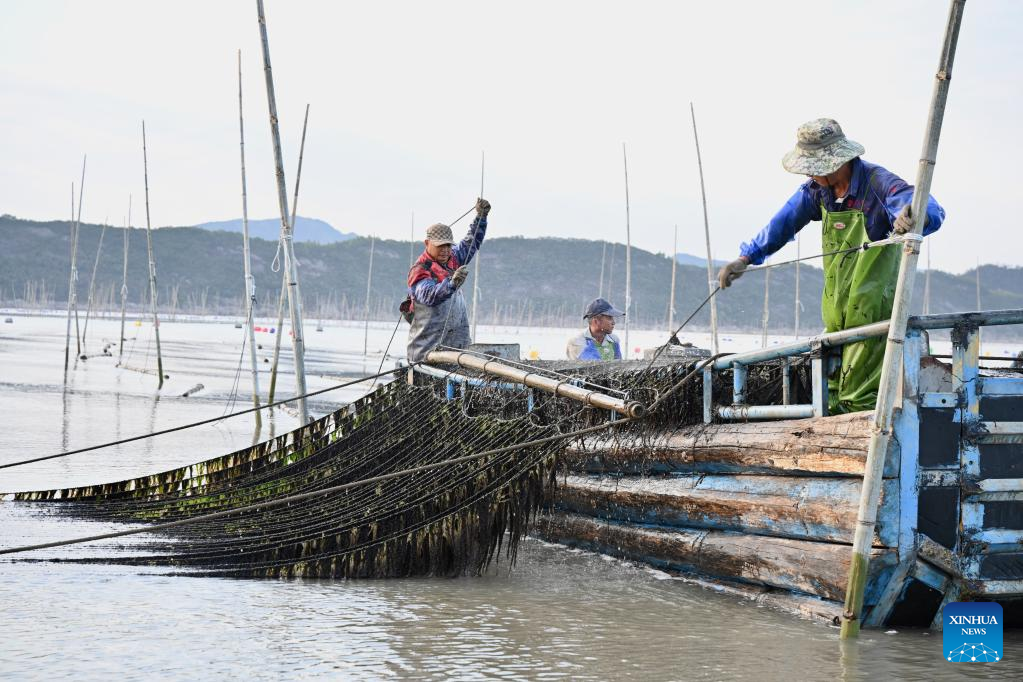
Fishers harvest laver at Shatangjie Village, Songshan Sub-district, Xiapu County of southeast China's Fujian Province, on Oct. 21, 2022. Known as zicai in Chinese, gim in Korean, and nori in Japanese, laver is an edible seaweed that plays an important part in the diets of East Asian countries. As one of the amplest source of laver products in the country, Xiapu boasts a vast area of seaborne farms for such seaweed, whose breeding, growing, and processing has become a leading cash cow for the locals. (Xinhua/Jiang Kehong)
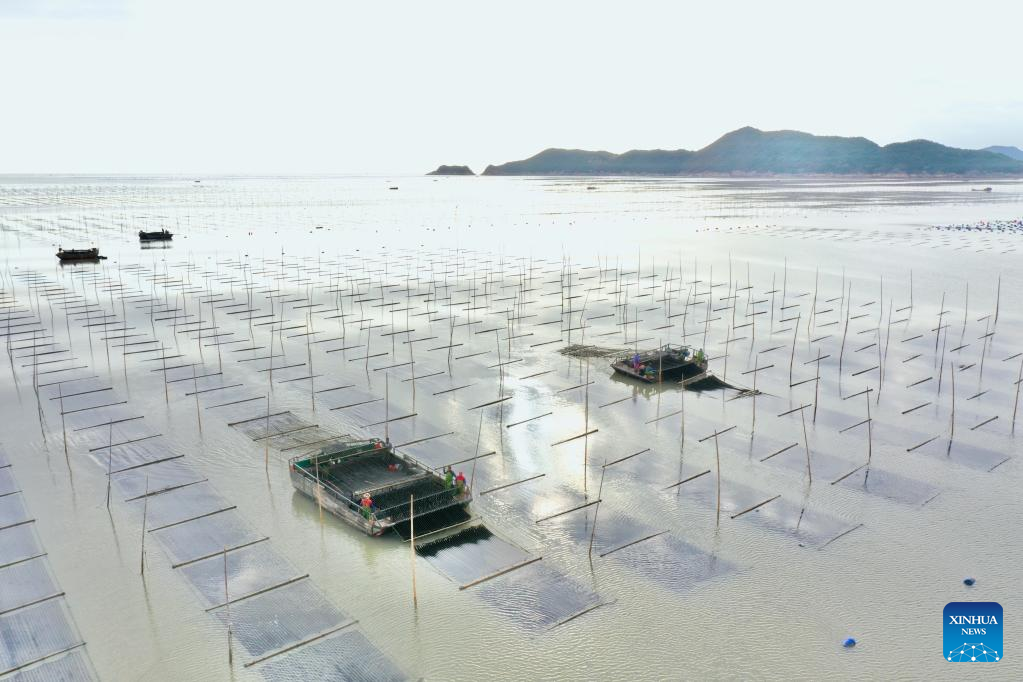
This aerial photo taken on Oct. 21, 2022 shows fishers harvesting in a seaborne laver farm at Shatangjie Village, Songshan Sub-district, Xiapu County of southeast China's Fujian Province. Known as zicai in Chinese, gim in Korean, and nori in Japanese, laver is an edible seaweed that plays an important part in the diets of East Asian countries. As one of the amplest source of laver products in the country, Xiapu boasts a vast area of seaborne farms for such seaweed, whose breeding, growing, and processing has become a leading cash cow for the locals. (Xinhua/Jiang Kehong)

This aerial photo taken on Oct. 21, 2022 shows boats loading newly harvested laver at a port of Shatangjie Village, Songshan Sub-district, Xiapu County of southeast China's Fujian Province. Known as zicai in Chinese, gim in Korean, and nori in Japanese, laver is an edible seaweed that plays an important part in the diets of East Asian countries. As one of the amplest source of laver products in the country, Xiapu boasts a vast area of seaborne farms for such seaweed, whose breeding, growing, and processing has become a leading cash cow for the locals. (Xinhua/Jiang Kehong)
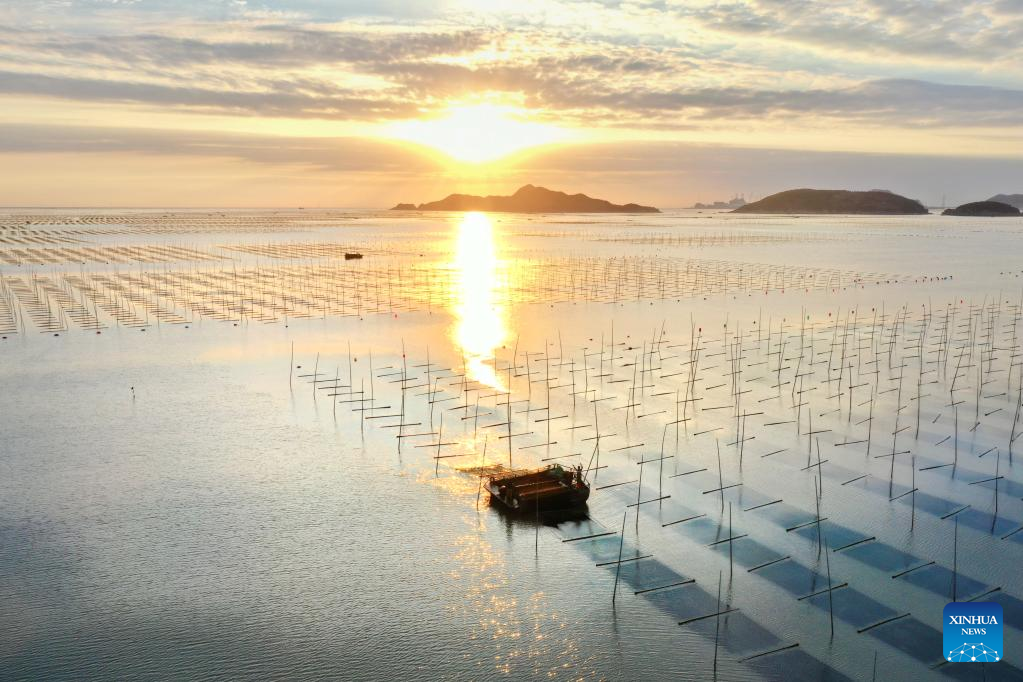
This aerial photo taken on Oct. 21, 2022 shows a fisher harvesting in a seaborne laver farm at Shatangjie Village, Songshan Sub-district, Xiapu County of southeast China's Fujian Province. Known as zicai in Chinese, gim in Korean, and nori in Japanese, laver is an edible seaweed that plays an important part in the diets of East Asian countries. As one of the amplest source of laver products in the country, Xiapu boasts a vast area of seaborne farms for such seaweed, whose breeding, growing, and processing has become a leading cash cow for the locals. (Xinhua/Jiang Kehong)

A fisher airs newly harvested laver at Sansha Town, Xiapu County of southeast China's Fujian Province, on Oct. 21, 2022. Known as zicai in Chinese, gim in Korean, and nori in Japanese, laver is an edible seaweed that plays an important part in the diets of East Asian countries. As one of the amplest source of laver products in the country, Xiapu boasts a vast area of seaborne farms for such seaweed, whose breeding, growing, and processing has become a leading cash cow for the locals. (Xinhua/Jiang Kehong)

This aerial photo taken on Oct. 20, 2022 shows a seaborne laver farm at Sansha Town, Xiapu County of southeast China's Fujian Province. Known as zicai in Chinese, gim in Korean, and nori in Japanese, laver is an edible seaweed that plays an important part in the diets of East Asian countries. As one of the amplest source of laver products in the country, Xiapu boasts a vast area of seaborne farms for such seaweed, whose breeding, growing, and processing has become a leading cash cow for the locals. (Xinhua/Jiang Kehong)

This aerial photo taken on Oct. 21, 2022 shows fishers harvesting laver at Shatangjie Village, Songshan Sub-district, Xiapu County of southeast China's Fujian Province. Known as zicai in Chinese, gim in Korean, and nori in Japanese, laver is an edible seaweed that plays an important part in the diets of East Asian countries. As one of the amplest source of laver products in the country, Xiapu boasts a vast area of seaborne farms for such seaweed, whose breeding, growing, and processing has become a leading cash cow for the locals. (Xinhua/Jiang Kehong)

Fishers aboard boats approach a seaborne laver farm at Shatangjie Village, Songshan Sub-district, Xiapu County of southeast China's Fujian Province, on Oct. 21, 2022. Known as zicai in Chinese, gim in Korean, and nori in Japanese, laver is an edible seaweed that plays an important part in the diets of East Asian countries. As one of the amplest source of laver products in the country, Xiapu boasts a vast area of seaborne farms for such seaweed, whose breeding, growing, and processing has become a leading cash cow for the locals. (Xinhua/Jiang Kehong)
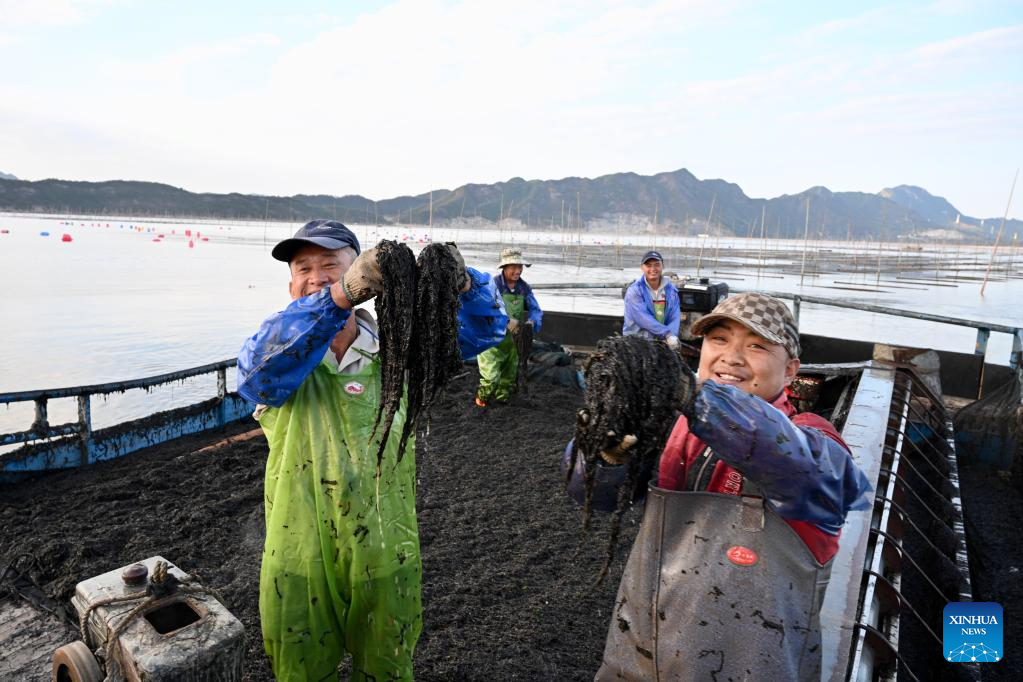
Fishers present newly harvested laver at Shatangjie Village, Songshan Sub-district, Xiapu County of southeast China's Fujian Province, on Oct. 21, 2022. Known as zicai in Chinese, gim in Korean, and nori in Japanese, laver is an edible seaweed that plays an important part in the diets of East Asian countries. As one of the amplest source of laver products in the country, Xiapu boasts a vast area of seaborne farms for such seaweed, whose breeding, growing, and processing has become a leading cash cow for the locals. (Xinhua/Jiang Kehong)
Photos
Related Stories
Copyright © 2022 People's Daily Online. All Rights Reserved.







